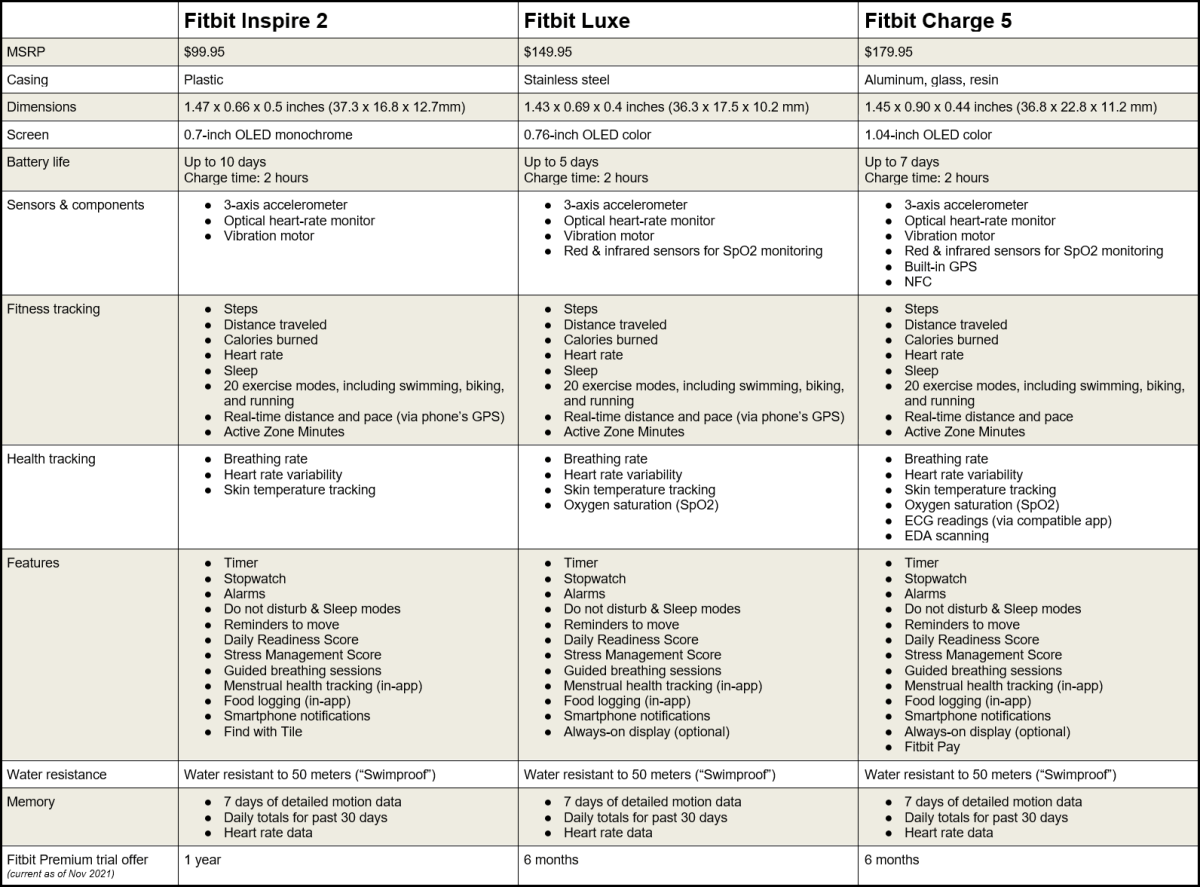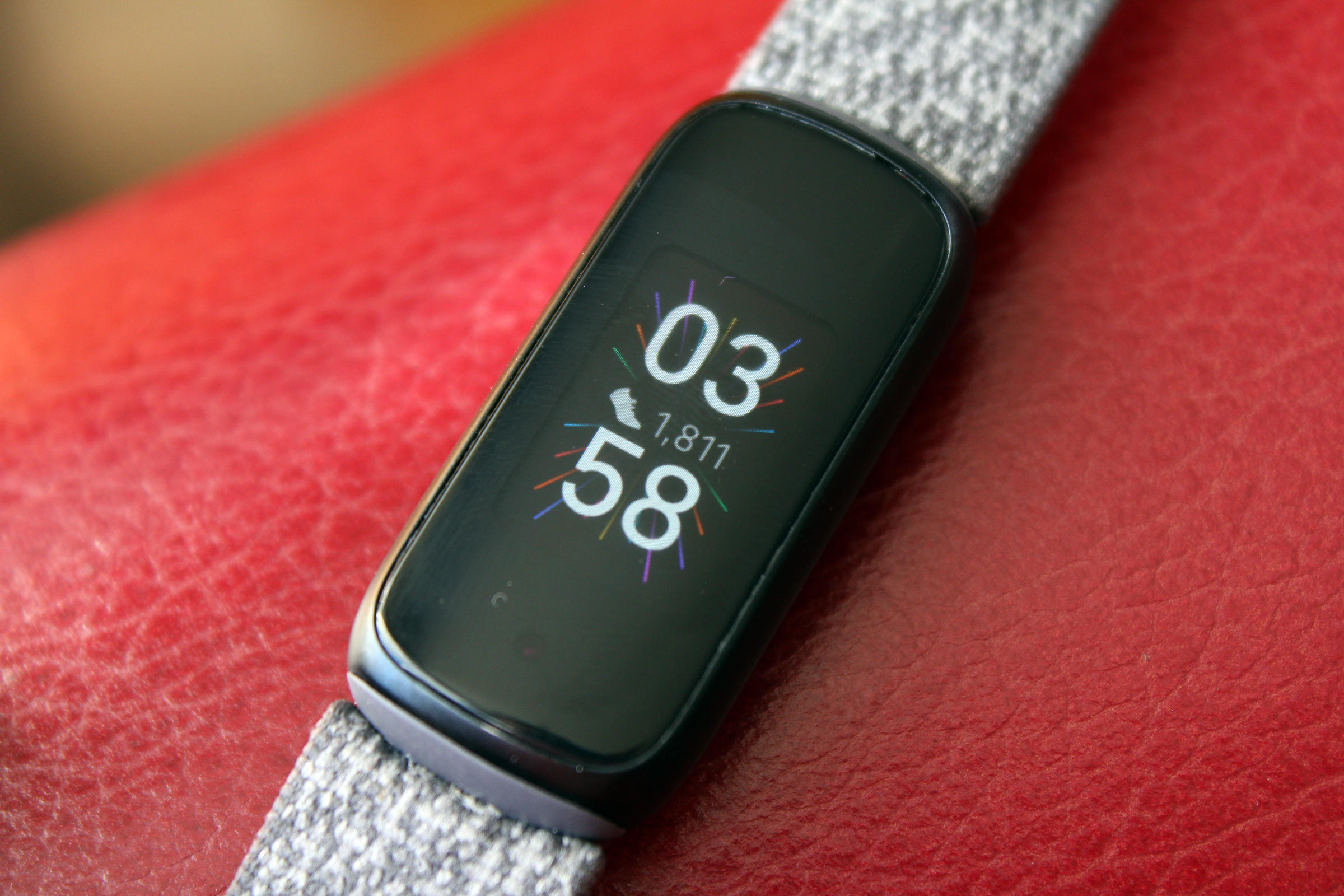Deciding between Fitbit trackers can be a tough choice. Compounding that problem is Fitbit’s website—the company isn’t consistent about what features it highlights, much less the amount of detail given. Comparing the various models isn’t straightforward.
To help speed up that process, we’ve highlighted the Fitbit Inspire 2, Luxe, and Charge 5’s most important differences for you. This quick and concise read should help you better weigh, say, the price tag and battery life on Inspire 2 against the color screens and fancier features of the Luxe and Charge 5. Want to see all the specs side-by-side? Check out the chart at the end of this article.
Inspire 2 vs. Luxe vs. Charge 5: Know the differences
Price
At $100 MSRP, the Fitbit Inspire 2 is the cheapest of the three trackers. The posh Luxe will set you back $150, but be aware it’s more of an aesthetic upgrade on the Inspire 2. (For more details, check out our Fitbit Luxe review.) For tangible upgrades to fitness and health tracking, you should look at the $180 Charge 5.
The Inspire 2 currently also comes with a full one-year trial of Fitbit Premium, the company’s subscription service that includes more detailed metrics and access to workout and meditation sessions. The Luxe and Charge 5 include six-month trials.
Screen
The monochrome Inspire 2 comes with the smallest screen, measuring 0.7 inches. The Luxe sports a slightly larger 0.76-inch color display, while the Charge 5 has the most real estate with a 1.04 inch screen.
Battery life
The Inspire 2’s monochrome display may not dazzle, but it can go the distance on battery life. You get up to 10 days on that entry-level model, while the color screen on the Luxe chops its battery life to half that, up to five days. The Charge 5, which also has a color screen, sits between the two with a rating of up to seven days.
Water resistance
The Inspire 2, Luxe, and Charge 5 are all water resistant to 50 meters, which Fitbit describes as “swimproof.”
Fitness tracking
All three trackers monitor the same types of fitness data, including steps, heart rate, and sleep. You can also track 20 different exercise modes including swimming, biking, and running, as well as see your real-time distance and pace. The key difference on that last point: For the Inspire 2 and Luxe, you’ll need to lean on your smartphone’s GPS to gather the data. In other words, only the Charge 5 lets you ditch your phone when you go on a run or bike ride.
Health tracking
While trackers aren’t replacements for proper health monitoring, Fitbit’s latest models come equipped with various sensors that watch for potential changes to wellness and stress levels. Their abilities scale as you go up in price—the Inspire 2 only keeps tabs on heart rate variability, plus breathing rate and skin temperature during sleep. Stepping up to the Luxe will tell you your blood’s approximate oxygen saturation level, while the Charge 5 can also handle ECG readings via a compatible app for heart health and EDA scanning for additional stress monitoring.
Features
The Inspire 2, Luxe, and Charge 5 share many features. For example, all come with the ability to set timers, stopwatches, and silent alarms, and you can also put them into sleep or do not disturb mode to silence notifications and/or keep the display off. But each has at least one stand-out feature, too. The Inspire 2 works with “Find with Tile,” which allows you to locate it through Tile’s smartphone app. The Luxe has the option of an always-on display, as does the Charge 5—and then the latter also supports Fitbit Pay, thanks to the inclusion of an NFC chip.
Dimensions
Of the three, the Luxe is the sleekest tracker, with a width of 1.43 inches and a depth of just 0.4 inches. The Inspire 2 has a slightly wider and thicker body at 1.47 and 0.5 inches, respectively, while the Charge 5 comes in at 1.45 inches wide and 0.44 inches thick.
Materials
Plastic encases the entry-level Inspire 2, while the sturdier Luxe is made of stainless steel. The Charge 5 goes for an even more posh vibe with aluminum, glass, and resin.
Fitbit Inspire 2 vs Luxe vs Charge 5: Full spec comparison

PCWorld





